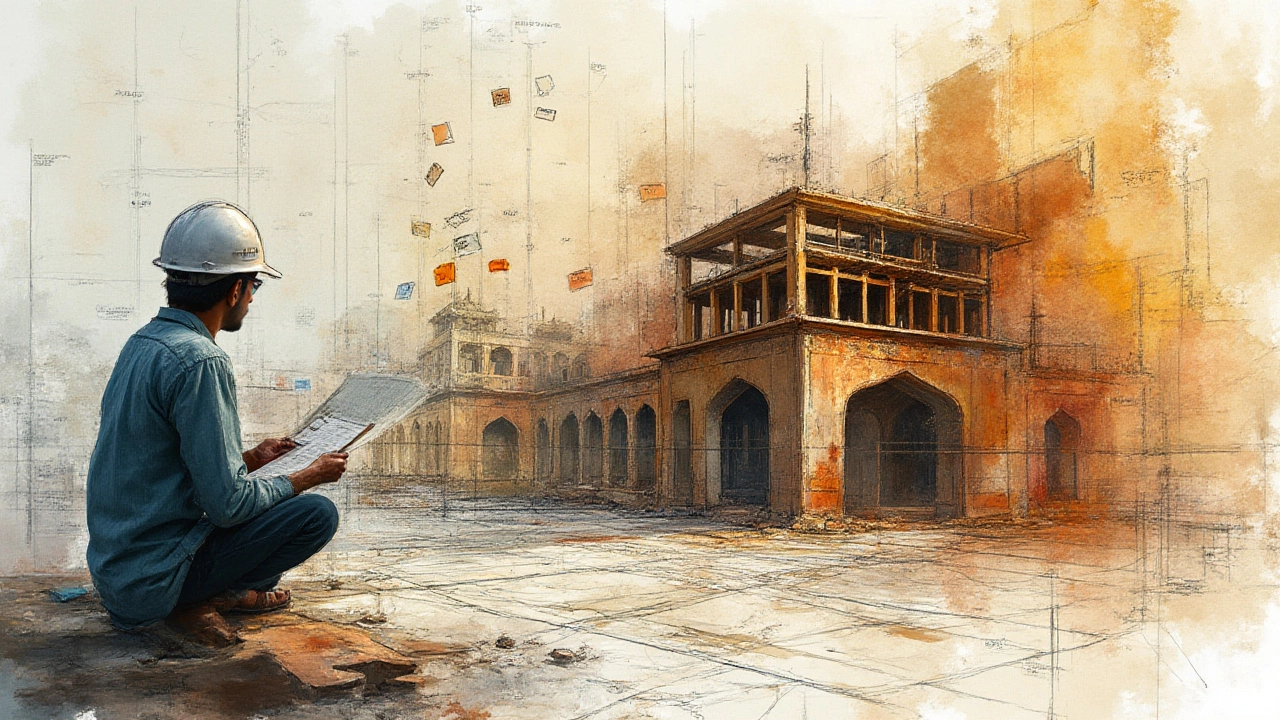Picture this: You’re itching to build, renovate, or totally transform a space, but before architects roll out the tracing paper, there’s one underrated document that shapes everything—the architectural services brief. This isn’t some tedious formality. It’s the backbone of any successful building project, from sky-high offices to cozy home extensions. Yet, far too many people skip through it, not realizing its power. So, what actually makes an architectural brief work? Let's peel back the mystery and look at why a great brief can save money, time, and sanity when working with architects.
What an Architectural Services Brief Actually Is
Imagine you’re heading out on a cross-country road trip. Would you just hop in the car, no map, no playlist, no snacks? Probably not—unless you love surprises… and traffic jams. The architectural services brief is the map, playlist, and snack list for your building project. It outlines what you need, why you need it, and how you hope it will all come together. It’s not just a wish list, though. This document is the official agreement between you (the client) and your architect, capturing all the essential details before anyone even sketches a line. And a fun fact: according to the Royal Institute of British Architects (RIBA), poorly defined briefs are among the top five reasons construction projects go sideways.
So what goes in? It’s part goals (like “goodbye awkward kitchen layout”) and part nitty-gritty (your budget, the planning quirks of your plot, essential deadlines, and any wildcards—like that 200-year-old oak tree you refuse to cut down). An architectural services brief also spells out exactly what roles your architect will take, whether it’s handling just designs, running the planning application maze, or sticking around through every site visit. It protects both sides: you get what you actually want, and your architect knows exactly what’s expected.
Some might wonder, “Is this just paperwork?” Not really. A solid brief can mean the difference between walking into your dream home—or endless delays and rising costs. I once spent four pages mapping out how many dog-friendly spaces Max needed at home (he still thinks he deserved more). Details like this can make—or break—a project.
Key Elements Every Brief Should Include
When architects talk about a well-written brief, they don’t just mean pages of legalese. They want clarity and specifics. First up: the project vision. What are you hoping to achieve? Maybe it’s a sun-drenched reading nook or a row of stores that draw crowds. Spell this out for your architect, but don’t worry if you’re not sure about technical stuff. Describe how you want the space to feel. Should it be peaceful, practical, or the life of the party?
Next, the scope of work. Are we talking a full new build, a single-family home upgrade, or a slick new restaurant? List out everything you expect the architect to handle. This includes things like planning applications, 3D models, site supervision, and even hiring the right contractors. More detail here means fewer surprises later on.
Then comes the budget—everyone’s favorite topic. Share it upfront. Don’t leave your architect guessing. According to AIA data, about 70% of projects that go over budget started off with unclear client expectations. Being honest and realistic early keeps your plans—and wallet—on track.
Site details also make a huge difference. Hand over existing surveys, measurements, photos, and info about any unique restrictions. For instance, if you live in a conservation area or near protected wildlife, this info’s crucial. Even little quirks like a steep slope or a noisy neighbor need a mention.
Don’t forget your timeline. When do you need to move in? Are there hard deadlines, like getting out of a rental or launching your business? Mark those out, along with key milestones: design review dates, planning submissions, breaking ground. A well-planned timeline helps everyone stay focused—and realistic—about what’s possible.
Finally, add special requirements. Maybe you need everything wheelchair-friendly, or there’s a tech system you want throughout the house. Or you share your life with a stubborn (but lovable) dog who needs his own space. Include these so nothing’s missed. The details make it work.

Benefits of a Thorough Brief (And What Goes Wrong Without One)
You know those renovation TV shows where everything seems fine… until the crew rips open a wall and finds a nest of unexpected problems? The same thing can happen in real life—except it’s often because the brief was too skimpy. The magic of a detailed brief is that it kicks off every part of the process with clarity. Architects who understand exactly what you want can create smarter, more creative solutions. And they’ll catch issues like budget gaps or planning hiccups before things get messy.
The numbers don’t lie. An industry survey from Building Design + Construction magazine reports that projects with strong, detailed briefs see 30% fewer change requests after design is approved. This matters—not just for your stress levels, but your wallet. Every change mid-design balloons costs, drags out schedules, and frustrates everyone involved. Check out this data:
| Project Type | With Thorough Brief | Without Brief |
|---|---|---|
| Average Budget Overrun | +7% | +23% |
| Timeline Delay | 2 weeks | 8 weeks |
| Unexpected Design Changes | 1-2 | 5+ |
But the benefits aren’t just about avoiding disasters. A well-prepared brief sparks creativity. When your architect can see the whole picture—including your quirks, hopes, and deal-breakers—they can design smarter, more personal spaces. Instead of generic plans, you get something that fits how you actually live or work. I’ve seen people add little bonuses to their briefs—like a mudroom for messy pets, or reading nooks hidden under stairs—which end up being the most-loved parts of the whole design.
And don’t underestimate peace of mind. Knowing what’s expected, at what stage, takes the pressure off. If you ever need to resolve a disagreement, the brief is your safety net—everything is written down. No vague memories, just the clear record you created together at the start.
Helpful Tips When Working on Your Architectural Brief
It might feel intimidating to start putting your dream on paper, but here are some practical moves to get you rolling:
- Treat the brief as a conversation, not a contract. Start by chatting with your architect. Even informal notes will help flesh out your ideas before the formal brief is drafted. Don’t worry about fancy language—describe your frustrations, dreams, and what you wish someone had told you before.
- Gather reference photos and examples. We all have that dream house (or café, or studio) saved on our phones. Share these with your architect. Images make it easier to explain tricky things—like the “feel” of a space or a favorite combination of colors and materials.
- Be honest about your budget and priorities. There’s no shame in cost-cutting. If the garden or solar panels aren’t make-or-break, say so upfront so resources go to what matters most. Experienced architects will help you stretch the budget by prioritizing must-haves over nice-to-haves.
- Ask architects for their own brief template. Top firms have detailed checklists or forms that cover everything from light preferences to storage needs. These templates help prompt you and save time you’d spend scribbling notes.
- Include input from everyone who’ll use the space. If you’ve got a family, team, or pack of mischievous pets (I see you, Max), their needs matter, too. Even small things—like where muddy paws get cleaned—can guide design decisions.
- Plan for the future. How will the space need to adapt? Kids grow up, businesses expand, lifestyles change. Adding a little “futureproofing” saves hassle later.
Finally—don’t file the brief away after it’s done. Use it as a living document, updating as your plans change. The best architects treat it like a story that guides the whole process. Trust me: Max may still think he deserves an even bigger backyard, but at least he got a sunbeam right by the window—because I buried that detail deep in my brief. Real happiness is in those small details you spell out at the very start.

Written by Fletcher Abernathy
View all posts by: Fletcher Abernathy